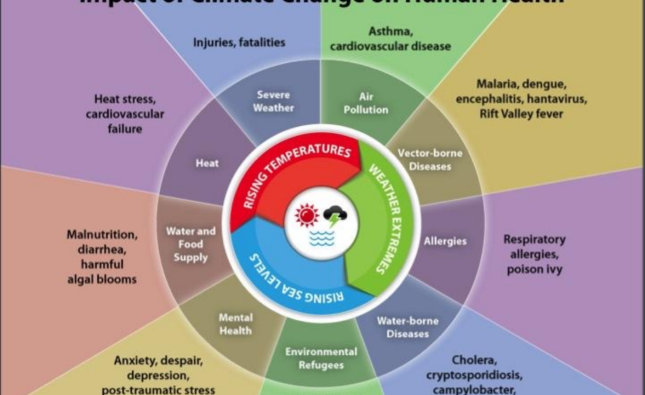
The advent of telemedicine has revolutionized the healthcare industry, providing unprecedented access to medical services, particularly in rural areas. This transformative technology bridges the gap between healthcare providers and patients, addressing critical issues of accessibility, affordability, and quality of care. This article delves into the profound impact of telemedicine on rural healthcare access, highlighting key benefits, challenges, and future prospects.
Enhancing Accessibility to Healthcare Services
One of the most significant advantages of telemedicine is its ability to enhance accessibility to healthcare services in rural areas. Historically, rural populations have faced numerous barriers to healthcare, including geographic isolation, a shortage of healthcare providers, and limited transportation options. Telemedicine mitigates these challenges by enabling remote consultations, diagnostics, and follow-ups through digital platforms.
Patients in rural areas can now connect with specialists and primary care providers without the need for long and often costly travel. This is particularly beneficial for individuals with chronic conditions who require regular monitoring and consultations. Telemedicine also facilitates timely interventions, reducing the risk of complications and hospitalizations.

Cost-Effectiveness and Economic Benefits
Telemedicine offers a cost-effective solution for both patients and healthcare providers. For patients, it eliminates travel expenses and reduces time away from work or family responsibilities. For healthcare providers, telemedicine can lead to operational efficiencies, such as reduced no-show rates and optimized appointment scheduling.
Moreover, telemedicine can alleviate the financial burden on rural healthcare facilities. By enabling remote consultations with specialists, rural clinics and hospitals can avoid the high costs associated with recruiting and retaining specialized medical personnel. This can result in significant savings and allow for the reallocation of resources to other critical areas, such as infrastructure and patient care.
Improving Quality of Care
The integration of telemedicine into rural healthcare systems has the potential to significantly improve the quality of care. Telemedicine platforms often come equipped with advanced diagnostic tools and electronic health records (EHR) integration, facilitating comprehensive and coordinated care.
Patients can receive timely and accurate diagnoses, and healthcare providers can collaborate more effectively, regardless of their physical location. This collaborative approach enhances the continuity of care and ensures that patients receive the most appropriate and evidence-based treatments.
Telemedicine also supports preventive care initiatives. Through regular virtual check-ups and remote monitoring, healthcare providers can identify potential health issues before they escalate, promoting early intervention and better health outcomes.
Addressing Healthcare Provider Shortages
Rural areas often suffer from a shortage of healthcare providers, particularly specialists. Telemedicine can address this issue by enabling healthcare providers to extend their reach beyond urban centers. Specialists can conduct virtual consultations and provide expert opinions to rural healthcare providers, ensuring that patients receive the necessary care without the need for relocation.
Additionally, telemedicine can serve as a valuable tool for continuing medical education and professional development. Rural healthcare providers can access training and educational resources remotely, staying updated with the latest medical advancements and best practices. This can enhance their skills and knowledge, ultimately benefiting patient care.
Challenges and Barriers to Implementation
Despite its numerous benefits, the implementation of telemedicine in rural areas is not without challenges. One of the primary barriers is the lack of reliable internet connectivity. Many rural regions still suffer from limited broadband access, which can hinder the effectiveness of telemedicine services. Addressing this digital divide is crucial to ensuring that all rural populations can benefit from telemedicine.

Another challenge is the need for regulatory and reimbursement frameworks that support telemedicine. While progress has been made in recent years, there are still inconsistencies in telemedicine policies across different states and regions. Standardizing regulations and ensuring adequate reimbursement for telemedicine services are essential for its sustainable adoption.
Patient acceptance and digital literacy are also important considerations. Some rural populations may be hesitant to embrace telemedicine due to a lack of familiarity with digital technologies. Healthcare providers must invest in patient education and support to ensure that patients feel comfortable and confident using telemedicine platforms.
Future Prospects and Innovations
The future of telemedicine in rural healthcare is promising, with ongoing advancements and innovations poised to further enhance its impact. The integration of artificial intelligence (AI) and machine learning into telemedicine platforms can improve diagnostic accuracy and personalize treatment plans. AI-powered chatbots and virtual assistants can also provide patients with immediate support and guidance, improving patient engagement and satisfaction.
Wearable devices and remote monitoring technologies are set to play a significant role in the future of telemedicine. These devices can continuously collect and transmit health data, allowing healthcare providers to monitor patients’ conditions in real-time and make informed decisions. This can be particularly beneficial for managing chronic diseases and ensuring timely interventions.
Telemedicine can also facilitate the development of virtual health communities, where patients and healthcare providers can share information, support, and resources. These communities can foster a sense of connection and empowerment among rural populations, promoting better health and well-being.
Conclusion
Telemedicine has the potential to transform rural healthcare access, addressing long-standing challenges and improving health outcomes for rural populations. By enhancing accessibility, cost-effectiveness, and quality of care, telemedicine can bridge the gap between rural and urban healthcare services. However, to fully realize its potential, it is essential to address the challenges of internet connectivity, regulatory frameworks, and patient acceptance. With continued innovation and investment, telemedicine can play a pivotal role in creating a more equitable and efficient healthcare system for all.










